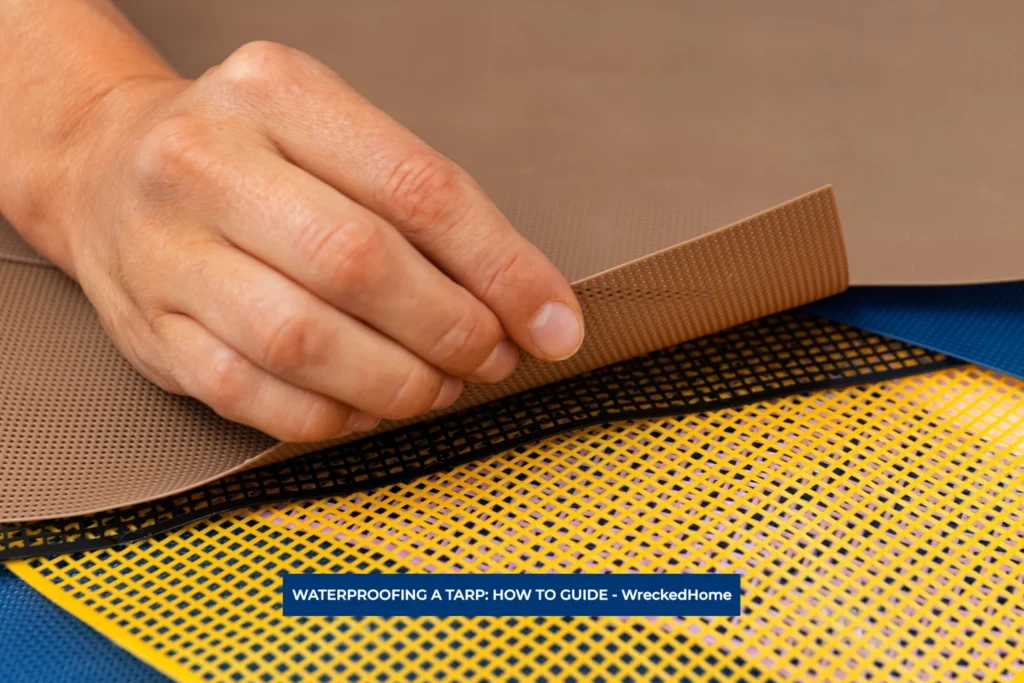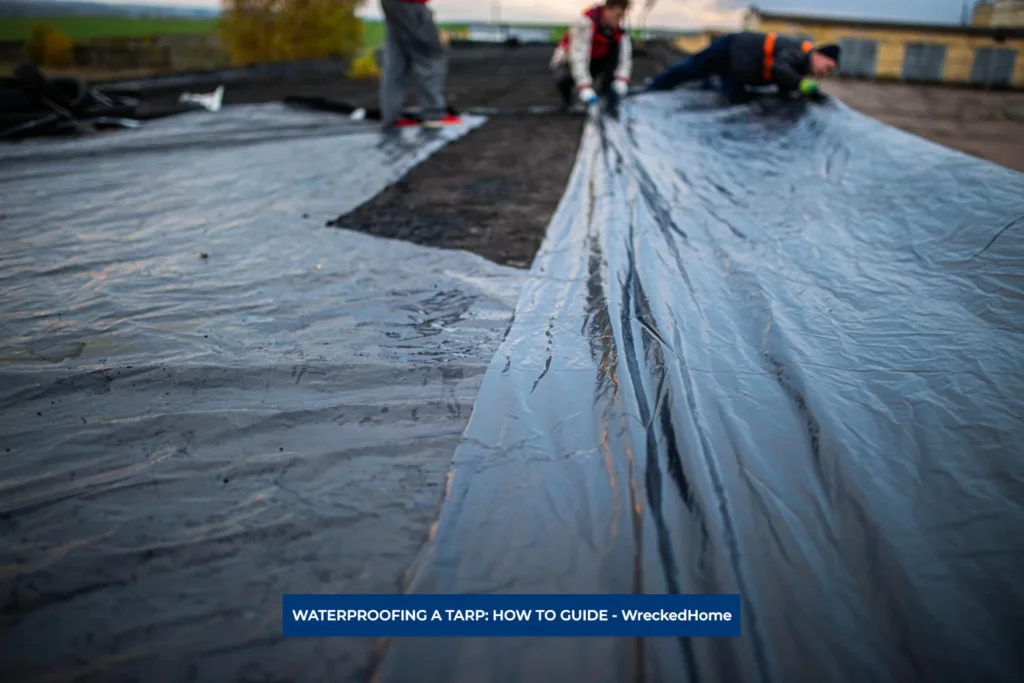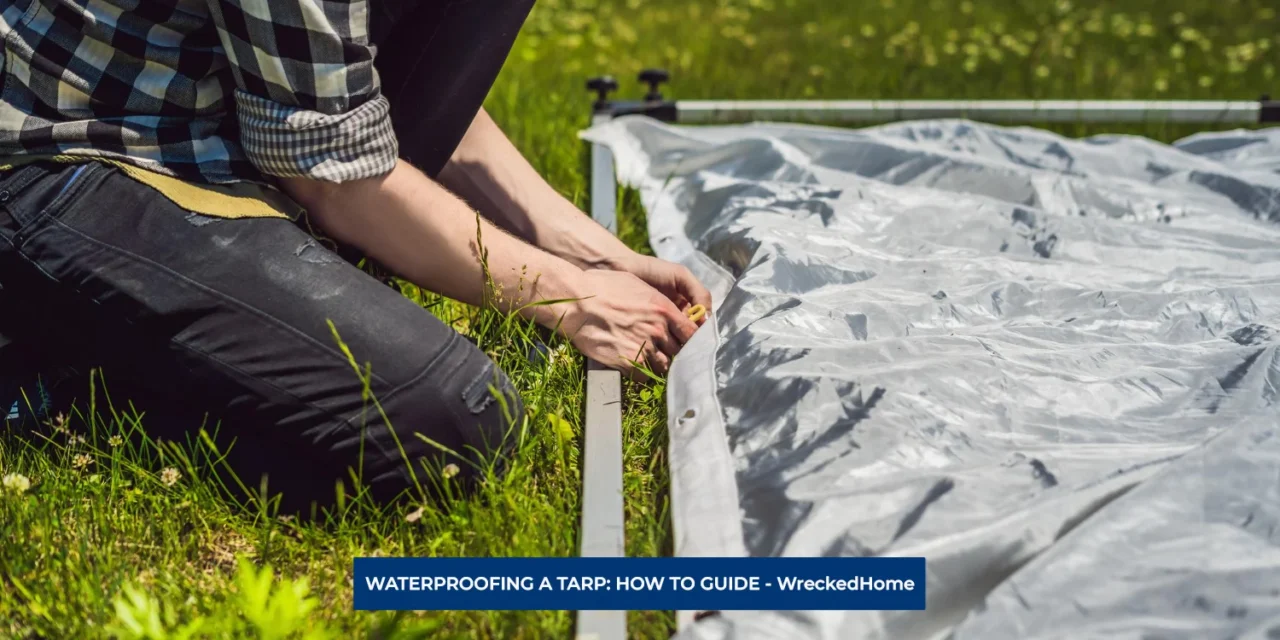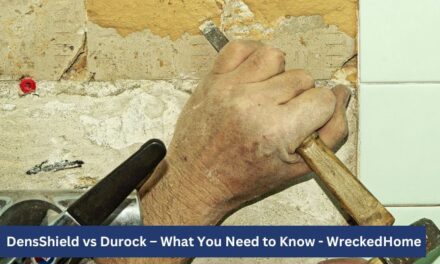If you have a backyard then you probably have items that need to be protected from water and sun damage. Some of the most common items are outdoor furniture, fireplaces, storage dens, or even backyard pavilions. It becomes extremely frustrating and expensive to maintain or replace these items if they become damaged. This is why it is so important to invest in something that prevents them from becoming damaged. The best solution is a tarp! However, some tarps need to be waterproofed.
Waterproofing a tarp by hand can help you save money that is otherwise spent on repairs. If tarps are properly waterproofed then they serve as the perfect shields for windows, roofs, and sheds. This is a time consuming process, but it gives great results if done properly.
- Is Waterproofing a Tarp Possible?
- What Do You Need for Waterproofing a Tarp?
- Steps taken for Waterproofing a Tarp:
- What Happens If You Don't Waterproofing your Tarp?
- Choosing The Ideal Tarp For Your Home
- Which Material Tarp Needs Waterproofing
- Why Do Canvas Tarps Need Waterproofing?
- In Conclusion
- Frequently Asked Questions(FAQs)
- Can canvas tarps be waterproofed?
- How do I waterproof a canvas tarp?
- How often should I waterproof my canvas tarp?
- Are there specific tips for maintaining waterproofed canvas tarps?
- Can I use canvas tarps in heavy rain after waterproofing?
- What are the benefits of waterproofing a tarp that is canvas material?
- Can I use canvas tarps for outdoor furniture or a canopy after waterproofing?
Is Waterproofing a Tarp Possible?

Yes, it is possible for you to start waterproofing a tarp. You can also do it by yourself. All you need to do is to allot some time, effort and use the right products. However, be prepared. Waterproofing a tarp takes less than an hour, however, the curing process takes much longer.
What Do You Need for Waterproofing a Tarp?

Water-Resistant Coating: This is easily available at most stores; however, if you don’t find it then any waterproofing spray for shoes or work gear will work.
Adhesive Spray: This is used as a primer as it helps enhance the bonding of the water-resistant coating with the canvas.
Clean Surface: you’ll need a clean and smooth surface for this task for laying your tarp, preferably in a garage, to make the process easier.
Breathing Mask: it is needed so you don’t inhale any unnecessary chemical fumes and damage your respiratory system during the process.
Canvas Tarp: it’s important to prepare and inspect the tarp that you plan to waterproof.
Single-Use Gloves: they are essential for safeguarding your hands against harmful chemicals.
General Cleaning Supplies: for this, you’ll need a bucket, cotton rags, hot water, and dish washing detergent.
Steps taken for Waterproofing a Tarp:
Scrub To Remove Dirt: It’s essential to scrub down your canvas tarp to remove dust and debris. You need to do this to apply your waterproof coating. You can remove the dirt by using warm water and dish washing detergent.
Air Dry and Check Grommets: Following the soap rinse, get a cloth to soak up any extra water, and be certain there is no water trapped within the grommets.
Apply Adhesive Spray: It’s important to use it as a primer as it helps the water-resistant coating stick better to the tarp. Make sure that you apply it evenly from a distance and that a smooth layer is applied.
Apply Water-Resistant Coating: Once the adhesive spray has dried then you can apply the water-resistant coating evenly. It’s important to apply a smooth and even coating to prevent water from getting trapped in the uneven grooves.
Allow Time to Cure: After waterproofing a tarp, give it plenty of time to cure. Speed up the process by using a fan. Let it air dry in a well-ventilated area.
What Happens If You Don’t Waterproofing your Tarp?
Tarps that are used at home are usually made of material like canvas, which is typically a blend of cotton and polyester. These materials can deteriorate if regularly exposed to water. This can cause mildew build-up. Hence, waterproofing is an important step to avoid unpleasant odors and holes in fabric. It keeps the tarp intact and improves its durability.
Choosing The Ideal Tarp For Your Home
The choice of material for home tarps relies on your specific needs and their intended use and location. Here are some common materials used for home tarps:
- Canvas: Canvas material tarps are a good choice for, as they are breathable, durable, and have a natural look. These tarps are most suitable for covering a patio with outdoor furniture and firewood.
- Polyethylene: Poly tarps are suitable for protecting items from both rain and sun; along with that, they are lightweight, affordable, and available in a variety of colors and sizes. They are commonly used for covering outdoor equipment and vehicles as temporary roofs.
- Vinyl: Vinyl tarps are heavy-duty and highly waterproof. They are excellent for protecting items from heavy rain. They are often used for covering boats and trailers and as welding curtains. However, they are less breathable than canvas but offer superior waterproofing.
- Polyester: Renowned for their robustness and resistance to abrasion, polyester tarps are frequently used in industrial and heavy-duty settings. They can also be a good choice for household use when extreme durability is required.
- Mesh: Mesh tarps are designed with small holes that allow air and light to pass through. They are perfect for shade and wind protection, making them suitable for outdoor canopies and privacy screens.
- PVC-Coated Polyester: These tarps combine polyester with a PVC coating. This is why they provide excellent strength, waterproofing, and durability. They are commonly used for long-term outdoor storage and as truck tarps.
While deciding on a material for waterproofing a tarp for your home, you need to consider factors like weather conditions, intended use, and budget. For general use, polyethylene or canvas tarps are often suitable. For enhanced waterproofing or protection, you might find vinyl or PVC-coated polyester tarps better suited.
You can check our website, as we have many articles that may help you solve many such issues around your home.
Visit our store for 10% off our Home Maintenance products here.
Which Material Tarp Needs Waterproofing
All the materials mentioned above have their advantages. Polyethylene tarps, for instance, are known for their strength and lightweight nature. However, you might use PVC-coated polyester or Vinyl tarp if you live in an area that has heavy downpours regularly, as they provide the best water resistance.
However, when it comes to home use, they all fall short when compared to canvas tarps. Canvas tarps are slightly more expensive but quite durable. They are considered a good choice for homes for several reasons. These include the following:
- Breathe-ability: Canvas allows air to pass through, hence it’s best for covering items or an area that requires ventilation. For example, outdoor furniture, firewood, or even some plants.
- Durability: Even with constant exposure to sunlight, canvas can still retain its quality; therefore, it gives you years of use.
- Aesthetics: Canvas has a more natural look and has an aesthetically pleasing appearance compared to plastic or vinyl tarps. They blend well with outdoor settings and can enhance the overall look of a space.
- Versatility: Canvas tarps can be used in a variety of ways like providing shade in the outdoor area; such as the patio. It can be used as a temporary roof for your storage or shed area.
- Environmental Friendliness: Since canvas is a biodegradable material it’s more eco-friendly than plastic or vinyl tarps. This means that it will not harm the environment when it actually wears out.
Why Do Canvas Tarps Need Waterproofing?
Canvas is a great material for household tarps, but they need waterproofing. The reason is because this material can absorb water making it less effective at keeping items dry during heavy rain. However, it can be waterproofed to improve its water resistance.
On the other hand, tarps made from materials like polyethylene, vinyl, or PVC are already water-resistant. These tarps are designed to repel water and keep the items they cover dry. However, these materials are usually not preferred for homes.
So, in summary, canvas tarps are one of the only types that need waterproofing, while synthetic tarps are already waterproofed by design.
In Conclusion
Waterproofing a tarp requires time and patience. The effort, however, is worthwhile to safeguard your belongings from water damage. Waterproofing a tarp is a preventive measure against numerous issues, and a correctly waterproofed tarp can offer years of utility.
However, It’s important to note that the performance of waterproofing products may differ. Therefore, adhere to the manufacturer’s guidelines and select reputable products for your canvas tarp.
If you want to read more helpful articles for home improvement, visit our website.
For any repairs, installations, builds, or questions; We recommend you to hire a professional. Find A Pro Near You Here!
Frequently Asked Questions(FAQs)
Can canvas tarps be waterproofed?
Yes, canvas tarps can be waterproofed to enhance their water-resistant properties and can provide years of use afterward.
How do I waterproof a canvas tarp?
To waterproof a canvas tarp, you can use products like canvas waterproofing sprays or solutions. Apply the waterproofing product over the entire tarp surface evenly and allow it to dry thoroughly by giving it enough time.
How often should I waterproof my canvas tarp?
The frequency of waterproofing depends on usage and exposure to sun and rain. It’s recommended to reapply waterproofing every year. It can be done whenever you notice some water leakage.
Are there specific tips for maintaining waterproofed canvas tarps?
Avoid abrasive cleaning methods, and instead, clean your canvas tarp with a soft brush or cloth. Regular cleaning and gentle handling can help maintain the waterproofing.
Can I use canvas tarps in heavy rain after waterproofing?
Canvas tarps treated for waterproofing can manage light to moderate rainfall adequately. But, they may not offer complete waterproofing during intense downpours. It’s advisable to use them in situations where prolonged exposure to heavy rain is not anticipated.
What are the benefits of waterproofing a tarp that is canvas material?
Waterproofing helps the tarp become more water resistant. It prevents moisture, mildew, and mold build-up. Therefore, it prolongs the tarp’s lifespan and protects the items it covers.
Can I use canvas tarps for outdoor furniture or a canopy after waterproofing?
Yes, waterproofed canvas tarps are suitable for covering outdoor furniture and creating canopies, as they offer protection against rain and UV rays while maintaining breathe-ability.





































